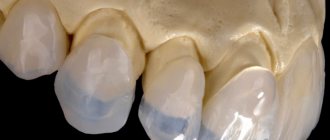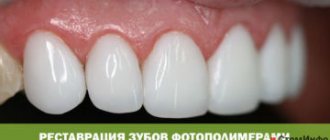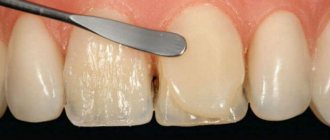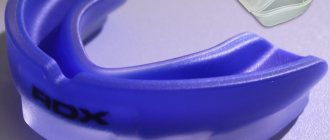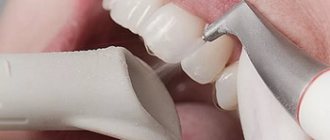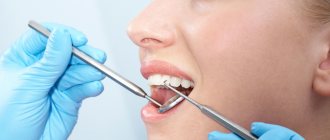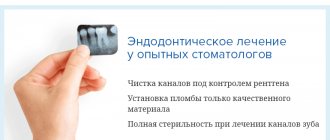Before you start working on your nails, you should choose a good file. They are not expensive at all, so you have the opportunity to experiment, choosing the most suitable one or several with different grain sizes. Don’t forget that the quality of the tool determines how easily and accurately you can process your nails. Even with good manicure technique, using a low-quality file can lead to cracking of the nail plate.
Manicure files are distinguished according to the following parameters:
- Shape (oval tool, boomerang file, block or rectangular file, banana file).
- Material (soft emery, ceramic - these are also called glass, metal).
- Functions (used for polishing, grinding, etc.).
- Abrasiveness (hardness is determined in grit - from 80 to 400 grit).
- Purpose (for nails not treated with shellac - as a rule, these can be washed; for nails strengthened with gel or shellac, acrylic).
What is abrasiveness?
The word “abrasiveness” refers to the hardness of the nail file. High-quality treatment of the nail plate largely depends on the degree of rigidity with which the file is chosen. After all, if it does not meet the norm, you can damage the nail.
How is the abrasiveness of files measured? Usually in grits. This unit of measurement clearly demonstrates the accumulation of those same abrasive particles on the surface of the manicure tool used. The lower the indicator, the greater the rigidity.
It is not advisable to choose a nail file simply by eye; it is better to decide what exactly it is needed for. This makes it easy and hassle-free to select the appropriate degree of hardness.
How to protect your nails from splitting and thinning
The choice of file determines whether your nails will be healthy. But it's not just about the chosen tool.
Few people know that the nail plate peels due to improper protection from aggressive household chemicals. You wash your hair, use various chemicals, all of this ends up under the free edge of the nail. When nails are protected from all sides, this affects beauty and health. Therefore, after treatment, you should use a base for the varnish, and you need to treat not only the surface of the nail plate, but also the free lower part.
Don't forget to cover your nails with special oils, rubbing such products into the nail itself and the cuticle. Some time will pass and you will not recognize your nails - they will become so healthy and beautiful.
In our Manicure Shop you will find the best types of modern manicure tools. All products are high quality and manufactured by reputable manufacturers. We are constantly expanding our range and will be glad if you like our products.
The value of the abrasiveness number of nail files
Surely many have noticed more than once a certain set of numbers on each file: for example, 180/240. How can this be explained? It’s simple, this means that on one side the file has 180 abrasive particles, and on the other there are 240. And these indicators are precisely grits. For example, what is a 180/240 file intended for?
This can be found out by analyzing several specific groups into which nail files are divided according to their indicators:
- 60–80 grit is a hard nail file. These files are primarily intended for adjusting the length of artificial nail plates. It is better to avoid treating natural nails with such files. If this is not done, the result may be delamination.
- 100–150 grit - such a file will have a slightly lower degree of hardness. A working tool with such indicators is used to adjust artificial nails, and with its help you can give it any shape.
- 150–240 grit – medium hardness. However, it cannot be used for natural nails either, only for artificial ones. Usually, with the help of such a file, the final shape of the nail plates is made and the necessary alignments are made.
- 240 grit is a high abrasiveness of files for natural nail plates.
- 240–400 grit – soft nail file. It is used to correct nails and also polish them.
- 400–900 grit - a file with a similar indicator may well be useful in preparing nails for polishing.
- 900–1200 grit – these can be microabrasives and buffs, which are designed to polish the nail plate to a mirror shine.
What types of file materials are there: differences and descriptions
Glass is mainly suitable for filing your own (not strengthened with gel) nails. This is a modern replacement for metal, sapphire and diamond files, which have long since become obsolete, but for some reason are still advertised. The latter are inconvenient because of their small size, and also because they cause microcracks to form on the nails, causing the nails to peel. In addition, after filing they leave microscopic burrs. This can be easily checked. File your nail with a metal (diamond, sapphire) file and run it over tights or skin: you will immediately feel that the surface is not smooth, but rough.
But today laser, glass and crystal nail files are in high esteem; their popularity abroad is at its peak, although in Russia they are not yet particularly common. The peculiarity of such tools is that they “glue” the scales together, preventing the nails from delaminating. Glass, crystal and laser files can be used to work in different directions (from left to right and from top to bottom), and also to clean the inner surface of the nail.
These files can be washed, disinfected and used again and again. The only drawback of glass manicure tools is that they cannot be dropped.
Any high-quality glass, crystal, laser file has a lifetime guarantee: the good and reliable surface of the tools does not wear off.
Soft sandpaper is used for both natural and artificial nails: it all depends on the grit.
There are also cardboard nail files with varying degrees of abrasiveness (roughness). They are usually used in beauty salons. This file can only be used once; it is impractical to use.
A buff is a block with an abrasive surface on two or four sides. Buffs are needed for final leveling of the surface and removal of small grooves; the tool is also suitable for polishing. If the nail plate is not perfectly flat, for example, after removing the gel after extensions, it should be sanded with a harder base. On smooth nails, just walk over the soft surface of the buff several times.
The polisher is used to strengthen nails using special oil. This is the final stage of processing before painting with varnish.
Recommended articles on this topic:
- Shellac, manicure and pedicure for the entire vacation! How to do it yourself?
- How to strengthen your nails in 10 days?
- Review of cuticle nippers from a specialist
- How to restore nails after extensions or what is a Pi-Shine manicure?
Measuring the abrasiveness of a file for natural nails
So, what kind of files are needed for natural nails? Typically, the abrasiveness of nail files should be 180/240 grit. However, it is best to stick to another indicator - 240. What is the reason for this? If the degree of rigidity is high, this means that the file will have a gentle effect on the nail plate.
Typically, a high index file can be used for polishing, but not for correction. If the hardness of a manicure tool starts from 900 grit and ends at 1200, this means that it is more suitable for grinding.
What else do you need to know about nail files?
It is important to remember that overgrown nails are not cut off with scissors or nippers, but only filed down. This will avoid microcracks and protect the edge of the nail from delamination.
In salons, to speed up the manicure procedure, the nail is actually first cut with clippers and then filed. This is only done if the nail is very long and filing will take a lot of time. The master processes the remaining length with a file. But if you are caring for your hands at home, it is better not to cut off the length at all, but to file off the edge of the plate without damaging it.
If your nails are thin, take a file of medium hardness, if they are hard and dense, you can choose a harder one. Please note that files from 220 grit and above are suitable for your own nails (not strengthened with gel or acrylic).
It is important to purchase only products from certified manufacturers: today there are many instruments on sale that are made using artisanal methods. Such products can cause serious harm to your nails and are generally dangerous to your health.
What is the abrasiveness of an artificial nail file?
If you take into account a file for artificial nails, in this case it is best to choose a tool with the least degree of rigidity.
In addition, if you want to shape your nails, then the file should have a value of no more than 100 grit. In the case of simple filing, use tools with an abrasiveness of 100 to 180 grit.
Does the abrasiveness of nail files depend on the material?
As for the material from which nail files are usually made, it can be either artificial or natural.:
- Glass files are considered one of the best for correcting natural nails. And all because they do not cause any harm to the nails. In addition, such tools can be easily washed.
- Crystal manicure tools also cut very well. With them it is possible to create smooth and soft edges. Typically, such nails no longer require further polishing.
- Fabric files are usually flexible, and their middle part is synthetic, plastic or wood. This product is not cheap.
- Files with polyethylene foam are usually called buffs. They are needed for polishing. This tool is easy to clean and does not absorb water.
- There are also nail files with spraying. They are usually ceramic. With such tools you can create different shapes for your nails, as well as remove rough skin near the nails.
For example, it is worth considering the classification of files according to abrasive coating:
- If the file is covered with pomegranate particles, then, as a rule, it has a wooden frame. But such a manicure tool will not be cheap. In addition, garnet abrasive particles are not sharp, which means that the file will last a long time.
- The files are also coated with a silicon hybrid. As a rule, these are black-blue crystals with hard and sharp edges. With the help of such a nail file it is easy to give any shape.
- Silicon carbide is also used for coating. Due to the zinc coating, the entire surface of such a file will be smooth. In addition, there will be no near-abrasive depressions, which means that no dust will accumulate.
- Aluminum oxide crystals are not as sharp as those of the silicon hybrid. The file itself is hard and tough. In another way it is called a saw stone.
Rating of toothpastes with abrasiveness 100-150 RDA
The product is designed for intensive enamel lightening. With prolonged use, it makes the surface of hard tissues thinner, which leads to painful sensations. Because of this, at home, the product should be alternated with more gentle drugs in accordance with the manufacturer’s recommendations. The best solution is a preliminary consultation with a dentist.
LACALUT BRILLIANT WHITE MENTA
The action of the hygiene product is based on a complex of enzymes and abrasives with an index of 110 units. Fermenting components soften fossilized deposits and facilitate their gentle removal. Coarse particles remove pigmentation and polish the surface to a shine.
NEW PEARL “WHITENING”
Toothpaste has proven itself in whitening enamel. Thanks to the presence of coarse particles 120 RDA, it quickly returns natural whiteness to teeth even with strong traces of coffee and tobacco. At the same time, the pyrophosphate system prevents the development of tartar.
Types of sanding files for nails and polishing
No less important is the abrasiveness of the files for grinding the nail plate itself. After all, without this it is almost impossible to achieve impeccable nail beauty. Now there is a large selection of manicure tools used for these purposes.
Buffs
Buffs are shaped like bars. What is the abrasiveness of the buff? Often, each facet of the buff is used for its intended purpose: first there is grinding, then polishing, and everything must be done in a clear sequence. Any unevenness on the nails is eliminated using the side whose abrasiveness is less than the others; various defects can be eliminated with a side with small grains.
Also, buffs can have different bases. Manufacturers mainly opt for polyethylene foam. Also, suede or fabric is of special quality; in addition, they can easily be used to process long natural nails.
A buff for natural nails should not be low abrasive. This tool is most suitable for artificial plates. If you polish natural nails, it is advisable to be very careful. This must be done for the simple reason that polishing involves removing the top layer of the nail plate itself, resulting in its thinning.
Nail files
There is a huge variety of files for polishing nails, and their abrasiveness should also differ. A low degree is most suitable for processing artificial plates, but for natural ones it is best to take note of a soft tool.
If the file has 300–400 grit, this may mean that it is good for removing small irregularities on the nails. But if the indicator is from 900 to 1000, then with this tool you can achieve excellent shine.
How to choose an abrasive nail file?
It’s not always possible to come to the store and buy a nail file you like just because, for example, it’s pink. Here it is important to consider the thickness of the nail plate. To do this, press your thumb on the very tip of your index nail. What will we get? This way you can easily bend the nail without feeling any pain. This indicates that the nail has a thin structure. If it still hurts a little, but the plate itself does not bend, the nail is thick.
You can also determine the thickness by color. In this case, unpainted nails are brought to the light. A thick plate will appear cloudy, while a thin plate will appear translucent. Now let's get down to business. For thin nails, it is better to choose ceramic or glass files that will not contribute to delamination. Ceramic may slightly damage such a nail.
If the thickness is average, then you should pay attention to files for natural nails, the abrasiveness of which exceeds 120 grit. Those with thick nail plates can please themselves with metal files. This way you can choose the most suitable tool for yourself.
How to determine the quality of a nail file?
Despite the variety of manicure tools, not all can be considered of sufficient quality. And hardly anyone will have the desire to use a bad nail file. Therefore, before you give money for a product, you should pay attention to several signs that will openly demonstrate the degree of its quality:
- The nail file should be flexible. In this case, it will not damage the nail, and will serve its owner for a long time.
- Between the frame and the surface that is intended for work, a special gasket is required.
- If the base of the nail file is made of plastic, then it will be the most reliable. The same cannot be said about a wooden frame.
The role of abrasives in toothpaste
Pollution and bacteria constantly accumulate in the oral cavity. The reason for their appearance is the smallest food debris that mixes with saliva. After they settle, a soft coating forms on the surface of the enamel. If not cleaned in a timely manner, it hardens and develops into tartar.
For regular daily oral hygiene, non-abrasive products are sufficient. But pigmented plaque or tartar can only be removed from the surface using abrasive means.
Abrasives are dense, large cleaning particles. Due to mechanical friction, they literally tear off complex contaminants from the surface. The higher the RDA value of a toothpaste, the larger the particles in its composition. Hygiene products are divided into several categories depending on the size of the granules.
How to use nail files correctly?
It is best to file your nails in one direction without changing it. If you make chaotic movements, in this case, separation of the nail plate may occur. In order to create a shape for the nails, it is recommended to file one free edge from the corner to its center, and the file should be at an angle.
The nail is visually divided into two parts and the edges are sawed until the desired shape has acquired its clear outline. There is no need to rush, otherwise there will be a risk of damage to the nail plate.
Typically, nails are filed once a week; you should not do this more often. During this time, the nail will recover well after such manipulations. It is best to polish once a month, otherwise the nail plate will become thin. It is also recommended to polish only dry nails, never wet ones.
Thus, having such information and adhering to some rules, you can choose a file for yourself, the abrasiveness of which will be the most suitable. Thanks to this, you can create a suitable shape for your nails without damaging them.
Rating of toothpastes with abrasiveness 0-70 RDA
Hygienic products are designed for gentle dental care. They are suitable for cleaning enamel on a daily basis. They do not show aggressive effects. Thanks to this, they can be used by people with hypersensitive enamel or gums, as well as for careful care of orthodontic dentures. It is very difficult to achieve intensive cleaning using such compositions. You have to periodically visit dentists for professional oral hygiene.
PRESIDENT SENSITIVE
It has an RDA index of about 25 units. This makes it possible to carry out teeth cleaning that is safe for enamel. Thanks to the high concentration of fluoride, when used daily, the paste restores the surface and relieves it from increased sensitivity. At the same time, it mineralizes the hard structure of the tooth, which helps to avoid the recurrence of problems.
SENSODYNE "WITH FLUORIDE"
The toothpaste is designed to care for sensitive teeth. It has pronounced remineralizing properties. Its nutritional particles penetrate deep into dentin tissue and restore them. Potassium nitrate and fluoride present in the recipe relieve inflammation and strengthen hard tissues.
BLANX MED WHITE TEETH
The products are designed for gentle whitening of sensitive teeth. It contains abrasives with a particle size of 39 units. This guarantees effective cleansing of daily plaque. In this case, it is possible to lighten two tones closer to natural. Nutrient extracts destroy bacteria and relieve inflammation.
